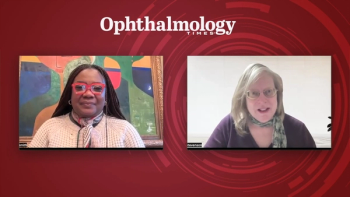
TearClear announces initiation of TC-002 CLEAR Study Phase 3 trial
The 3-month study will assess the safety and ocular hypotensive efficacy of TC-002 ophthalmic solution.
TearClear announced it has initiated the TC-002 Phase 3 trial has been successfully initiated.
TearClear’s CLEAR Study Phase 3 trial is a prospective, double-masked, randomly assigned, multi-center, active-controlled, parallel-group, 3-month study assessing the safety and ocular hypotensive efficacy of TC-002 ophthalmic solution (TearClear Preservative-Free Latanoprost Ophthalmic Solution 0.005%) compared to marketed Latanoprost Ophthalmic Solution 0.005%.
According to the company, it has developed a novel investigational platform through which topical ophthalmic solutions are preserved in a patient-friendly multi-dose bottle but are delivered to the ocular surface as preservative-free.
The company noted in a news release that about 30% to 40% of patients who rely on preserved, chronic glaucoma therapies show signs of moderate to severe ocular surface disease (OSD)1.
Studies have suggested that removal of preservatives may be beneficial for the ocular health of such patients. To date, options for these patients have been less than adequate.
“Up until now, the preservative-free options available to patient are accompanied with compromises related to cost and ease of use,” Thomas Samuelson, MD, Minnesota Eye Consultants, said in the news release. “TearClear’s approach offers patients the best of both worlds, where preservatives remain in the bottle but kept off the ocular surface.”
According to TearClear, it is the first and only company to develop products that keep BAK preserved formulations safely in the bottle and deliver pristine, preservative free drops of medicines to the eye.
“Enrolling the first subjects is an important milestone,” Stuart Raetzman, TearClear’s CEO, said in a statement. “We are optimistic that this will allow us to bring the only product to market that keeps BAK safely in the bottle while delivering pristine, preservative free drops to the eye.”
Preservatives, such as benzalkonium chloride (BAK), are critical in ophthalmic solutions to maintain sterility and stability in the bottle. However, on the ocular surface, they have been reported to be associated with adverse effects like hyperemia, tear film instability and conjunctival inflammation potentially leading to meibomian gland dysfunction (MGD). By eliminating preservatives on the ocular surface, the potential for long-term deleterious effects on the eye are eliminated.
Newsletter
Don’t miss out—get Ophthalmology Times updates on the latest clinical advancements and expert interviews, straight to your inbox.





